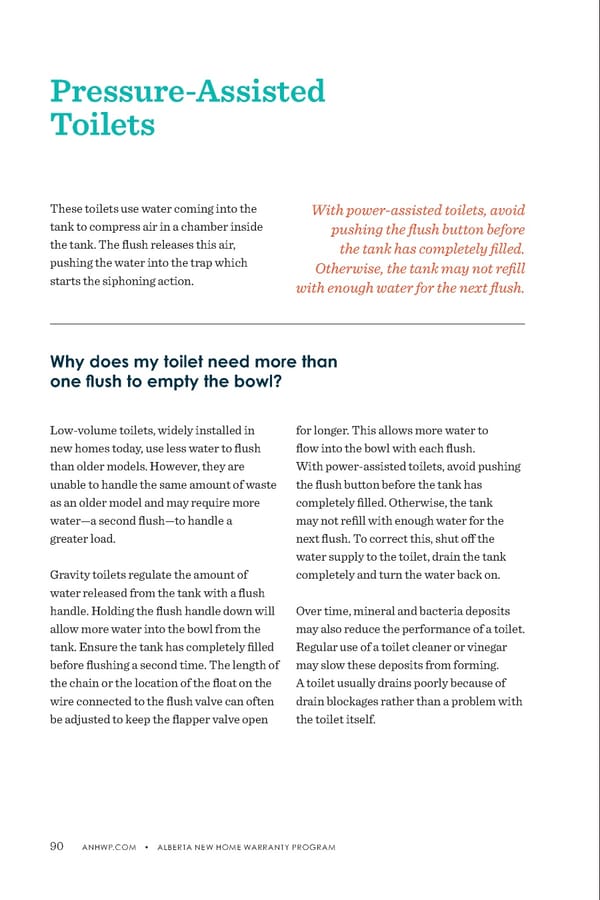Pressure-Assisted Toilets These toilets use water coming into the tank to compress air in a chamber inside the tank. The flush releases this air, pushing the water into the trap which starts the siphoning action. Low-volume toilets, widely installed in new homes today, use less water to flush than older models. However, they are unable to handle the same amount of waste as an older model and may require more water—a second flush—to handle a greater load. Gravity toilets regulate the amount of water released from the tank with a flush handle. Holding the flush handle down will allow more water into the bowl from the tank. Ensure the tank has completely filled before flushing a second time. The length of the chain or the location of the float on the wire connected to the flush valve can often be adjusted to keep the flapper valve open for longer. This allows more water to flow into the bowl with each flush. With power-assisted toilets, avoid pushing the flush button before the tank has completely filled. Otherwise, the tank may not refill with enough water for the next flush. To correct this, shut off the water supply to the toilet, drain the tank completely and turn the water back on. Over time, mineral and bacteria deposits may also reduce the performance of a toilet. Regular use of a toilet cleaner or vinegar may slow these deposits from forming. A toilet usually drains poorly because of drain blockages rather than a problem with the toilet itself. Why does my toilet need more than one flush to empty the bowl? With power-assisted toilets, avoid pushing the flush button before the tank has completely filled. Otherwise, the tank may not refill with enough water for the next flush. 90 ANHWP.COM • ALBERTA NEW HOME WARRANTY PROGRAM
 ANHWP Care & Maintenance Guide 2022 Page 91 Page 93
ANHWP Care & Maintenance Guide 2022 Page 91 Page 93